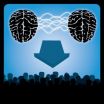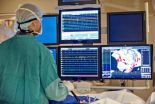(Press-News.org) Long before humans figured out how to create colors, nature had already perfected the process — think stunning, bright butterfly wings of many different hues, for example. Now scientists are tapping into those secrets to develop a more environmentally friendly way to make colored plastics. Their paper on using structure — or the shapes and architectures of materials — rather than dyes, to produce color appears in the ACS journal Nano Letters.
N. Asger Mortensen, Anders Kristensen and colleagues point out that currently, plastic manufacturers add pigments to their products. That gives them the range of colors customers have come to expect in everything from toys to tools. But these additional ingredients add to the growing waste stream of plastics manufacturing and make it difficult to recycle products. To come up with a more eco-friendly alternative, Mortensen's team turned to highly advanced materials that can be made to appear in different colors — purely by designing their surface structures at the nanoscopic level.
They layered materials, including ultrathin, nano-sized aluminum disks, in a way that manipulates light and creates a new kind of colored surface. To protect it from damage, the scientists topped it off with a scratch-resistant film. Using this method, they created a wide spectrum of colors that could be added to plastics.
INFORMATION:
The authors acknowledge funding from the Danish National Advanced Technology Foundation, the Danish Agency for Science, Technology and Innovation and the European Commission.
The American Chemical Society is a nonprofit organization chartered by the U.S. Congress. With more than 161,000 members, ACS is the world's largest scientific society and a global leader in providing access to chemistry-related research through its multiple databases, peer-reviewed journals and scientific conferences. Its main offices are in Washington, D.C., and Columbus, Ohio.
To automatically receive news releases from the American Chemical Society, contact newsroom@acs.org.
Follow us: Twitter Facebook END
Nature inspires a greener way to make colorful plastics
2014-07-30
ELSE PRESS RELEASES FROM THIS DATE:
Fighting over proposed changes to food labels
2014-07-30
To help Americans make better decisions about what they eat, the Food and Drug Administration (FDA) earlier this year proposed significant changes to the Nutrition Facts label found on nearly every food product in the U.S. An article in Chemical & Engineering News (C&EN), the weekly news magazine of the American Chemical Society, explains the suggested updates — and the fight that has ensued.
Britt Erickson, a senior editor at C&EN, points out that while the Nutrition Facts label has remained largely the same for two decades, nutrition science has not — and neither have ...
Brainwaves can predict audience reaction
2014-07-30
Media and marketing experts have long sought a reliable method of forecasting responses from the general population to future products and messages. According to a study conducted at The City College of New York, it appears that the brain responses of just a few individuals are a remarkably strong predictor.
By analyzing the brainwaves of 16 individuals as they watched mainstream television content, researchers were able to accurately predict the preferences of large TV audiences, up to 90 % in the case of Super Bowl commercials. The findings appear in a paper entitled, ...
Brazilian researchers identify RNA that regulates cell death
2014-07-30
Researchers from the University of São Paulo (USP) have identified an RNA known as INXS that, although containing no instructions for the production of a protein, modulates the action of an important gene in the process of apoptosis, or programmed cell death.
According to Sergio Verjovski-Almeida, professor at the USP Chemistry Institute and coordinator of a research funded by São Paulo Research Foundation (FAPESP), INXS expression is generally diminished in cancer cells, and methods that are capable of stimulating the production of this non-coding RNA can be used to ...
Scientists caution against exploitation of deep ocean
2014-07-30
CORVALLIS, Ore. – The world's oceans are vast and deep, yet rapidly advancing technology and the quest for extracting resources from previously unreachable depths is beginning to put the deep seas on the cusp of peril, an international team of scientists warned this week.
In an analysis in Biogeosciences, which is published by the European Geosciences Union, the researchers outline "services" or benefits provided by the deep ocean to society. Yet using these services, now and in the future, is likely to make a significant impact on that habitat and what it ultimately ...
Ablation increases survival for adults with atrial fibrillation
2014-07-30
Ann Arbor, Mich. -- Adults who undergo a minimally invasive technique to treat atrial fibrillation are significantly less likely to die from a heart attack or heart failure, according to a long-term study by the University of Michigan Frankel Cardiovascular Center.
More than 4 million people have atrial fibrillation, an age-related heart rhythm disorder that can cause a fluttering sensation in the chest and impair the heart's ability to pump blood.
The study published in Heart Rhythm shows cardiovascular mortality dropped by 60 percent among adults who had their normal ...
Mercury's magnetic field tells scientists how its interior is different from Earth's
2014-07-30
Earth and Mercury are both rocky planets with iron cores, but Mercury's interior differs from Earth's in a way that explains why the planet has such a bizarre magnetic field, UCLA planetary physicists and colleagues report.
Measurements from NASA's Messenger spacecraft have revealed that Mercury's magnetic field is approximately three times stronger at its northern hemisphere than its southern one. In the current research, scientists led by Hao Cao, a UCLA postdoctoral scholar working in the laboratory of Christopher T. Russell, created a model to show how the dynamics ...
Differential gene expression in proximal and distal nerve segments after sciatic nerve injury
2014-07-30
Wallerian degeneration is a subject of major interest in neuroscience. A large number of genes are differentially regulated during the distinct stages of Wallerian degeneration: transcription factor activation, immune response, myelin cell differentiation and dedifferentiation. Although gene expression responses in the distal segment of the sciatic nerve after peripheral nerve injury are known, differences in gene expression between the proximal and distal segments remain unclear. Dr. Dengbing Yao and co-workers from Nantong University, China used microarrays to analyze ...
Implanting 125I seeds into rat DRG for neuropathic pain: Only neuronal microdamage occurs
2014-07-30
The use of iodine-125 (125I) in cancer treatment has been shown to relieve patients' pain. Considering dorsal root ganglia are critical for neural transmission between the peripheral and central nervous systems, Dr. Tengda Zhang and colleagues from Institute of Radiation Medicine, Chinese Academy of Medical Sciences, China assumed that 125I could be implanted into rat dorsal root ganglia (DRG) to provide relief for neuropathic pain. 125I seeds with different radioactivity (0, 14.8, 29.6 MBq) were implanted separately into the vicinity of the L5 DRG. Experimental results ...
Facilitating transparency in spinal cord injury studies using recognized information standards
2014-07-30
Progress in developing robust therapies for spinal cord injury (SCI), traumatic brain injury (TBI) and peripheral nerve injury has been slow. A great deal has been learned over the past 30 years regarding both the intrinsic factors and the environmental factors that regulate axon growth, but this large body of information has not yet resulted in clinically available therapeutics. Prof. Lemmon and his team from University of Miami in USA proposed this therapeutic bottleneck has many root causes, but a consensus is emerging that one contributing factor is a lack of standards ...
Dyscalculia: Burdened by blunders with numbers
2014-07-30
Between 3 and 6% of schoolchildren suffer from an arithmetic-related learning disability. Researchers at Ludwig-Maximilians-Universitaet (LMU) in Munich now show that these children are also more likely to exhibit deficits in reading and spelling than had been previously suspected.
Addition and subtraction, multiplication and division are the four basic operations in arithmetic. But for some children, learning these fundamental skills is particularly challenging. Studies show that they have problems grasping the concepts of number, magnitude, and quantity, and that they ...




